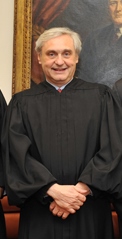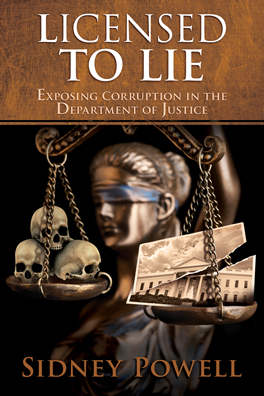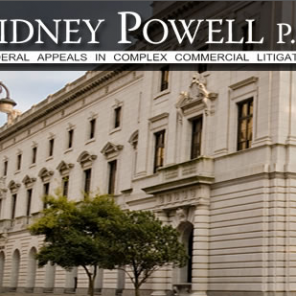KOZINSKI & Co. MAKE PROSECUTOR & COURT FOLLOW THE LAW! A Novel Concept.
In an opinion showing great respect for and actually enforcing Due Process, the government’s burden of proof, the Speedy Trial Act, Rule 16 ‘s disclosure requirments, and the reasons for a fair trial, Ninth Circuit Chief Judge Kozinski, joined by Judges Wardlaw and Gould, vacated an illegal reentry conviction and remand the case for further proceedings on whether the government’s failure to disclose under Rule 16 was willful, and ASSIGN THE MATTER TO A NEW JUDGE. In the case, United States v. Hernandez-Meza, the district court judge, like far too many others, seemed to feel compelled to help the prosecutor secure a conviction-nevermind the rules. The Ninth Circuit views the rules differently-as in, they should be followed.
To make things clear for all concerned, the Panel of the Ninth Circuit:
) held that the district court’s ruling allowing the government to introduce evidence after the evidence had closed misstated the record and was an abuse of discretion.
Because the district court’s ruling—allowing the government to introduce evidence after the proofs had closed—failed to
show the proper degree of reluctance and misstated therecord, it was an abuse of discretion. See Hinkson, 585 F.3dat 1261–62.
2) held that a Speedy Trial Act Violation that required dismissal of the charge:
The government here took just two days beyond the STA deadline to bring Hernandez-Meza to trial. The government could have avoided this problem, had it asked the district judge to stop the STA clock during either of the one-week continuances granted due to the collapse of plea negotiations.
See 18 U.S.C. § 3161(h)(7)(A); Zedner v. United States, 547 U.S. 489, 507 (2006). But the government made no such request and the STA clock ran out. Under the circumstances, the district judge had no authority to let the case go forward. See 18 U.S.C. § 3162(a)(2).
3) Rejected the government’s claim of suprise and and held it to its burden of proof.
What matters in satisfying the government’s burden of proof in a criminal case is not objective reality nor defendant’s personal belief, but the evidence the government presents in court. No competent prosecutor would be surprised, based on what he thinks defendant should know, to find defense counsel poking holes in the government’s case. The argument is without merit, yet the government made it before the district court, and again on appeal. See United
States v. Kojayan, 8 F.3d 1315, 1320, 1322 (9th Cir. 1993)(we expect the government on appeal not to repeat specious arguments line prosecutors make in the heat of the moment).
4) held the government must follow Rule 16:
Upon a proper request by the defendant, the government must produce items in its control that it “intends to use . . . in its case-in-chief at trial.” See 16 Fed. R. Crim. P. 16(a)(1)(E)(ii). The government doesn’t contest that the mother’s naturalization certificate was in the government’s control or that Hernandez-Meza made a timely Rule 16 request.
5) and held that the DISTRICT JUDGE should pay attention to Rule 16 and enforce it:
In defense counsel’s view, there was no point in allowing
the government to reopen because it had failed to disclose the
certificate during discovery and so was precluded from
introducing it as part of its case-in-chief. Despite defense
counsel’s attempts to engage the district court on this issue,
the court never addressed it. When defense counsel reiterated
the argument, the judge brushed her off: “We’re beyond
that,” he said, and moved on.
But defense counsel had raised a legitimate issue and was
entitled to a ruling from the district court. Giving an
explanation for significant rulings is an important component
of due process. It lets the adversely affected party know that
the judge has heard and understood its argument, and that the
judge’s ruling is based on the facts and the law. An
explanation also allows the judge to confirm that his ruling is
correct. If he is unable to articulate a plausible rationale for
his ruling, he may think better of it. Finally, and not least, by
failing to give any indication that he applied the correct legal
standard, the district judge made appellate review difficult.
See Hinkson, 585 F.3d at 1261–62; cf. United States v.
Taylor, 487 U.S. 326, 336–37 (1988) (“[A] district court must
. . . clearly articulate [its reasoning] in order to permit
meaningful appellate review.”). Had the district judge paused to consider defense
counsel’s argument,he may well have realized that thegovernment was seeking to reopen in order to present a document during its case-in-chief that it had failed to disclose during discovery. But, by failing to disclose, the government undertook the clear risk that it would be precluded from presenting the document as part of its principal case. See Fed. R. Crim. P. 16(a)(1)(E)(ii); id. 16(d)(2). Allowing the government to reopen in order to introduce the documentcircumvented the government’s self-imposed limitation. This was unfair to Hernandez-Meza, who was entitled to build his defense strategy on the assumption that he had seen all the items the government would present as part of its case.
The naturalization certificate should have been disclosed in any event under the separate prong of Rule 16 that applies to documents “material to preparing the defense.” See Fed. R. Crim. P. 16(a)(1)(E)(i). Materiality is a low threshold; it is satisfied so long as “the information [in the certificate] would have helped” Hernandez-Meza prepare a defense. United States v. Doe, 705 F.3d 1134, 1151 (9th Cir. 2013). Information is material even if it simply causes a defendant to “completely abandon” a planned defense and “take an entirely different path.” Id.
But wait, there’s more 🙂
Upon defendant’s request, the government must disclose any documents or other objects within its possession,custody or control that are “material to preparing the defense.” Fed. R. Crim. P. 16(a)(1)(E)(i). Unlike the preceding and subsequent subsections, which both require that “the government knows—or through due diligence could know—that the” item exists, see Fed. R. Crim. P. 16(a)(1)(D), (F), subsection (E) is unconditional. Lack of knowledge or even a showing of due diligence won’t excuse non-compliance. It thus behooves the government to interpret the disclosure requirement broadly and turn over whatever evidence it has pertaining to the case. See United States v. Leal-Del Carmen, 697 F.3d 964, 969 n.4 (9th Cir. 2012); see also Editorial, Beyond the Brady Rule, N.Y. Times, May 19, 2013, at SR10. When there has been a proper Rule 16(a)(1)(E)(i) request, and the prosecution finds itself holding a document during the trial that it should have turned over, as happened here, it must promptly advise opposing counsel and the court that it hasn’t complied with its Rule 16 obligations. See Fed. R. Crim. P. 16(c). The district court can then take such remedial measures as it deems appropriate, including continuing the trial or declaring a mistrial. See Fed. R. Crim. P. 16(d)(2).
It gets even better. 🙂 🙂 In the interest of the appearance of justice, the panel assigns the case to a new judge to examine whether the prosecutor deliberately withheld the certificate from the defense to try to lock him into a position, despite obvious knowledge it was material.
We vacate the conviction and remand for an evidentiary hearing into whether the prosecution’s failure to disclose the certificate in discovery or at any point before the proofs had closed was willful. If it was willful, the district court shall impose appropriate sanctions. The district court shall, in any event, dismiss the illegal reentry count of the indictment on account of the STA violation, with or without prejudice, depending on its weighing of the relevant factors. See 18 U.S.C. § 3162(a)(2); United States v. Lewis, 349 F.3d 1116, 1121–22 (9th Cir. 2003).
We are perturbed by the district court’s handling of the reopening issue. The court persisted in giving a reason for allowing the government to reopen that was contradicted by the record, despite defense counsel’s repeated attempts to point out the error. The court also ignored defendant’s twiceraised Rule 16 objection and made a questionable ruling regarding defendant’s Speedy Trial Act claim.
““Whether or not [the district judge] would reasonably be expected to put out of his mind” his previous rulings, and “without ourselves reaching any determination as to his ability to proceed impartially, to preserve the appearance of justice, . . . we conclude reassignment is appropriate,” and we so order. See Ellis v. U.S. Dist. Court (In re Ellis), 356 F.3d 1198, 1211 (9th Cir. 2004) (en banc).
VACATED and REMANDED. This panel retains jurisdiction over any further appeals in this case.
BRAVO TEAM JUSTICE!! JUDGES KOZINSKI, WARDLAW & GOULD.













